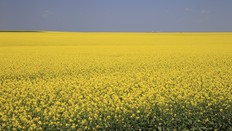Caribbean getting smothered by colossal cloud of Sahara dust
The dust concentration was high, at .55 aerosol optical depth, the highest amount so far this year

Article content
SAN JUAN, Puerto Rico — A massive cloud of dust from the Sahara Desert blanketed most of the Caribbean on Monday in the biggest event of its kind this year as it heads toward the United States.
The cloud extended some 2,000 miles (3,200 kilometres) from Jamaica to well past Barbados in the eastern Caribbean, and some 1,200 kilometres from the Turks and Caicos Islands in the northern Caribbean down south to Trinidad and Tobago.
“It’s very impressive,” said Alex DaSilva, lead hurricane expert with AccuWeather.
The hazy skies unleashed sneezes, coughs and watery eyes across the Caribbean, with local forecasters warning that those with allergies, asthma and other conditions should remain indoors or wear face masks if outdoors.
The dust concentration was high, at .55 aerosol optical depth, the highest amount so far this year, said Yidiana Zayas, a forecaster with the National Weather Service in San Juan, Puerto Rico.
The aerosol optical depth measures how much direct sunlight is prevented from reaching the ground by particles, according to the U.S. National Oceanic and Atmospheric Administration.
The plume is expected to hit Florida, Louisiana, Alabama and Mississippi late this week and into the weekend, DaSilva said.
However, plumes usually lose most of their concentration in the eastern Caribbean, he noted.
“Those islands tend to see more of an impact, more of a concentration where it can actually block out the sun a little bit at times,” he said.
The dry and dusty air known as the Saharan Air Layer forms over the Sahara Desert in Africa and moves west across the Atlantic Ocean starting around April until about October, according to NOAA. It also prevents tropical waves from forming during the Atlantic hurricane season, which runs June 1 to Nov. 30.
June and July usually have the highest dust concentration on average, with plumes travelling anywhere from 5,000 feet to 20,000 feet above the ground, DaSilva said.
In June 2020, a record-breaking cloud of Sahara dust smothered the Caribbean. The size and concentration of the plume hadn’t been seen in half a century, prompting forecasters to nickname it the “Godzilla dust cloud.”











Postmedia is committed to maintaining a lively but civil forum for discussion. Please keep comments relevant and respectful. Comments may take up to an hour to appear on the site. You will receive an email if there is a reply to your comment, an update to a thread you follow or if a user you follow comments. Visit our Community Guidelines for more information.